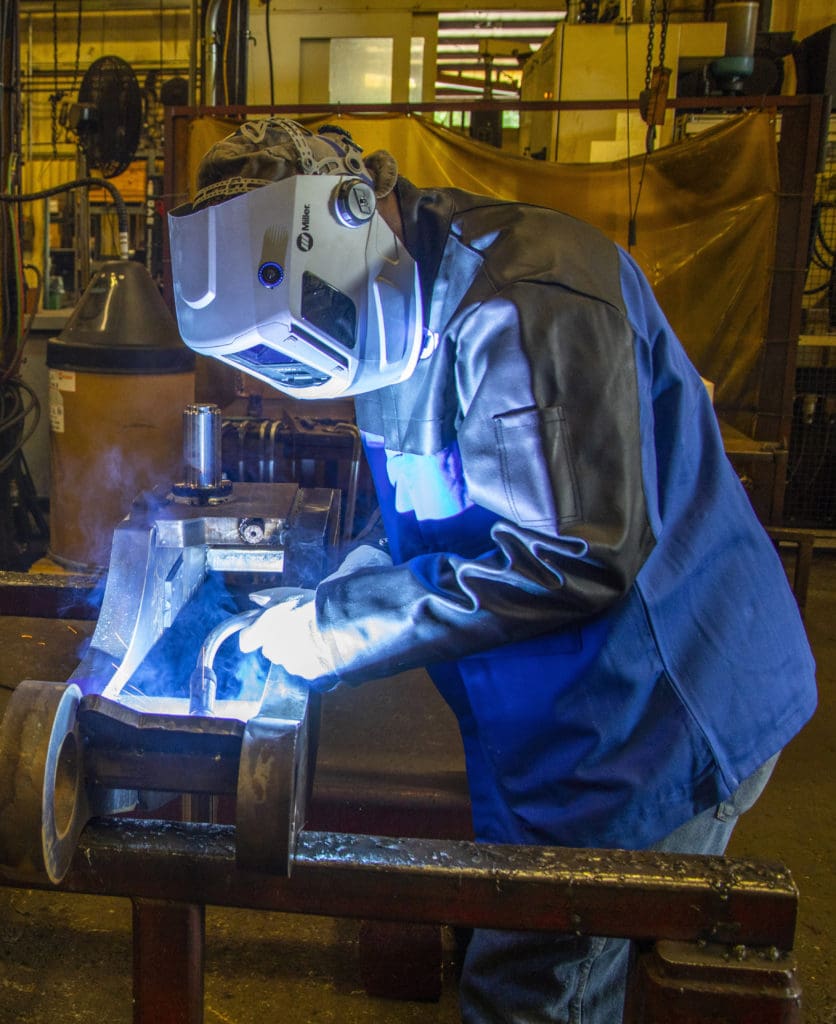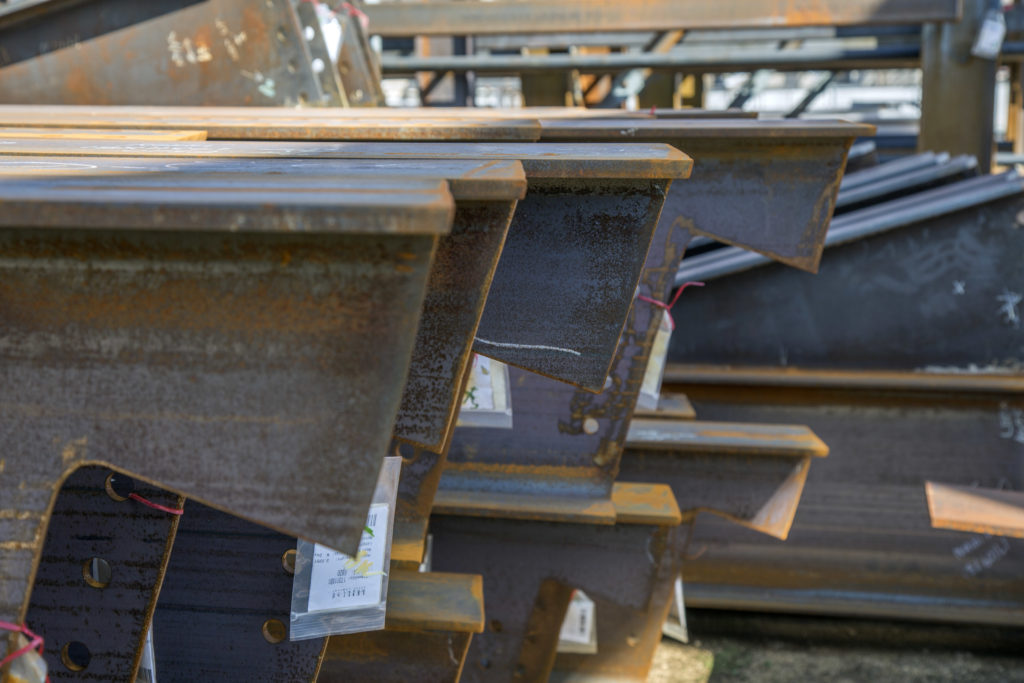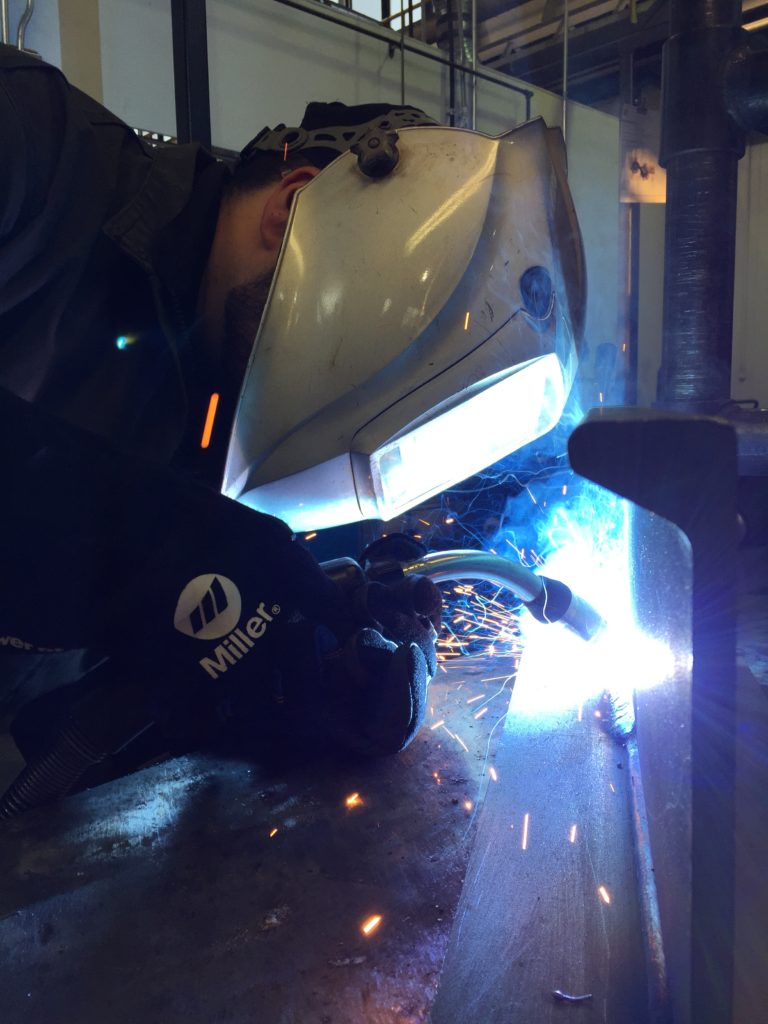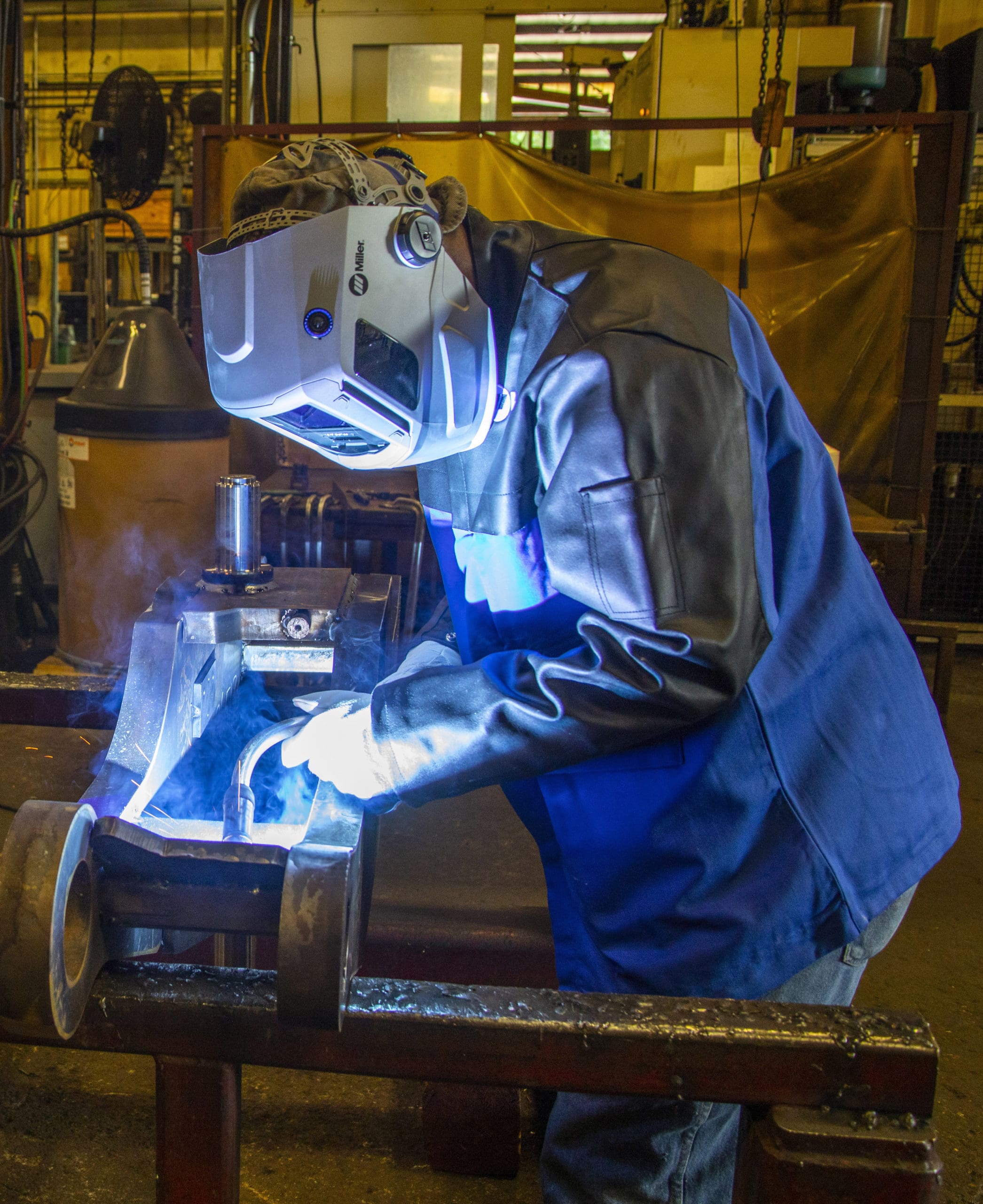How Material Conditions Affect Welding Filler Metal Performance
It’s not uncommon to encounter challenging material conditions when welding. From fabrication shops to general construction, busy operations are working to minimize costs on competitive projects, so material cleaning is often a step that is removed from the process.
Whether the material condition involves rust, mill scale or coatings, the thought is often: Don’t bother cleaning it; just weld over it.

In these applications, choosing the right filler metal for the base material conditions can help address these quality issues and improve results.
Common material conditions
Some of the most common material conditions encountered in welding applications are mill scale, galvanized coatings, oil, and rust. Base materials may arrive at the welding operation with these conditions present from either a treatment during manufacturing of the material or how the products were stored.
Removing these coatings from the material takes time and adds cost, so many operations don’t undertake the process of cleaning. Instead, operators weld over the material coatings or rust, which can add difficulty to the welding process and affect weld quality.
Proper cleaning of the base material is always recommended. But in applications where that isn’t feasible or practical, the right filler metal can help improve results when welding materials with these conditions.
Welding mill scale
Mill scale is a protective oxide layer that forms on metal when it is hot rolled during the manufacturing process. Cold rolling the steel eliminates mill scale formation but adds costs to the production process, so many operations don’t choose cold rolled over hot rolled material. The mill scale layer can also be blasted off prior to welding.
A much slower travel speed is one of the pitfalls of welding on mill scale — in some cases, half the speed compared to welding base material that has been cleaned and prepped. A slow travel speed is necessary to burn off the mill scale layer with the welding arc. A too-fast travel speed on mill scale will cause an erratic weld pool, resulting in an inconsistent or wavy weld bead. Welding over mill scale also causes more spatter compared to welding clean metal.

When choosing a filler metal to tackle material with mill scale, a flux-cored wire can help. Flux-cored wires typically have the most deoxidizers in their chemical composition, which helps bring impurities to the surface. Good flux-cored wires for welding mill scale are American Welding Society (AWS) classes E71T-1C/M and E71T-9C/M. These wires provide the best weldability compared with other flux-cored wires.
Metal-cored wires, such as AWS E70C-6M, are also good choices because they are high in deoxidizers, like silicon, which offers great impurity-gathering capability that help filler metals perform better on dirtier materials.
A shielding gas combination that provides a “hotter” arc — such as a 90% argon and 10% carbon dioxide — can also provide benefits for welding steel with mill scale, rust or primer coating. The higher temperature can help burn away the coating or rust faster. Increasing the welding voltage slightly can also provide the same benefits.
Welding galvanized steel
Galvanized base metal is very common in many welding applications. Material is galvanized through either a dipping process or an electroplating process that forms a coating designed to prevent rust and oxide from forming on the metal. The thicker the coating, the better the protection — but the harder it is to weld over.
Welding galvanized steel requires slower travel speeds but be aware that welding galvanized metal can cause porosity and weld cracking. If an operation can avoid galvanizing before welding and instead complete the dipping process after the material has been welded, then that is preferred and helps avoid these issues. If there is high residual stresses present after welding operators may experience Liquid Metal Embrittlement (LME), which is cracking in the weld or heat-affected zone (HAZ) after hot dipping.

In applications where it’s necessary to weld galvanized steel, there are filler metals designed to provide better performance on galvanized and coated materials. A flux-cored wire with an AWS E71T-11 classification works well on coated steels because of the added aluminum and other deoxidizers that help reduce impurities and cracking.
Welding over rust
Rust is another common material condition. It differs from mill scale in that mill scale is formed during the manufacturing process, while rust forms when the metal is exposed to the atmosphere. Moisture and humidity can speed up the rusting process so proper storage of material is important to consider.
Rust has less electrical conductivity than steel, so it will be harder to establish a stable arc on very rusty material. The thicker the rust, the more difficult welding will be. Welding over rust can cause porosity and high levels of spatter.
Look to flux-cored and metal-cored wires with high levels of deoxidizers to weld through rust. For welding A36 steel, AWS E71T-1C/M and E71T-9C/M flux-cored wires are good choices. For metal-cored wires, choose AWS E70C-6M classification.
Oil-coated materials
Many plates and other metal pieces come into the welding process with oil on them. The oil is often left on the material as lubrication used in the cutting process. There is little reason to ever weld over oil, since removing it from metal parts is a much faster and easier process than any of the other material conditions listed above. Simply use some acetone and a rag to wipe the oil from the weld joint and surrounding area.
Filler metals help optimize performance
When it comes to welding dirty or coated materials, proper cleaning and part preparation is ideal. When that isn’t possible due to time or cost constraints, choose a filler metal with a high level of deoxidizers to burn through the coating or mill scale layer and provide better performance and results.
Republished from Welding Journal (February 2023) with permission from the American Welding Society. Click here to view the original article.



